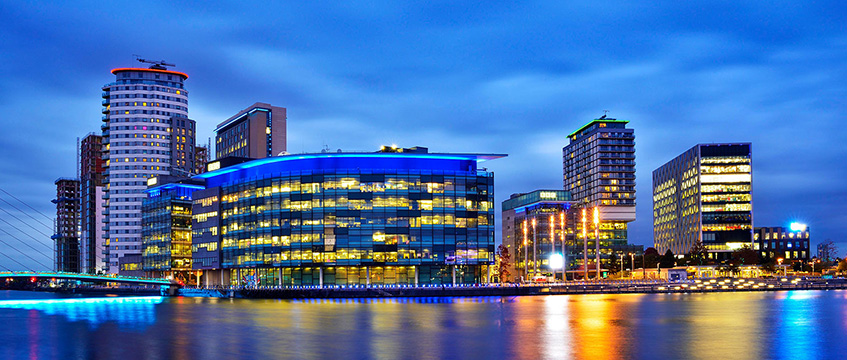When comparing investment into the UK in 2018 to the previous year, it is a remarkably similar story in terms of both spend by investor type and in regional breakdown. The three headlines of last year – Brexit, headwinds in the retail sector and local authority investment – had little impact on the overall totals as the market remained fairly stable.
According to market information firm Property Data, investment into the UK reached £46.5bn last year, a decrease of 6.6% on 2017’s £49.8bn, but a fairly positive picture in the face of sustained uncertainty.
The UK’s strength lies in the diversity of its markets: outside of London there are dominant regional cities such as Leeds, Manchester and Bristol that continue to attract investment from a spectrum of sources.
Types of investment
On a sector level, industrial and logistics assets are flying with £9.9bn transacted over 2018 as the strong occupational story driven by retailers and e-commerce companies taking space continues.
Traditional alternatives have become mainstream, as evidenced by the hotel sector attracting £6.6bn of investment from a wide range of sources.
There has been plenty in the press about local authority spending, in particular the heavy scrutiny on those that spend outside their boundaries.
Our statistics show that investment remained constant for councils at £1.82bn in 2018, compared to £1.85bn in 2017. Those that spent outside their operational area rose from 21% in 2017 to 48% in 2018 as they continued to search for long-term income.
Spending by local authorities is not something we expect to slow in the coming year. The low interest rates from the Public Works Loans Board encourage borrowing as councils look to diversify their income streams. There is also the element of regeneration, particularly with town centre retail schemes where the social value of ownership can be reflected.
Overseas investors take the lion’s share of the total UK volume, accounting for 44% of investment into the UK in 2018 and spending £20.4bn. The strength of regional cities and the established nature of the commercial property market ensures the regions remain an attractive target for investment.
This is particularly true for those looking for a stable home for capital where domestic markets may not be as mature or stable in terms of currency and governance. The majority of overseas money in the UK went into London, attracted by its global position and attractiveness as a long term-investment proposition.
Investment in the regions
However, Scotland (£833m), the North West (£646m) and the West Midlands (£606m) all benefited from significant overseas money as investors looked to gain more exposure outside of London.
The strong pricing and the narrow yields of the capital can make cities such as Birmingham, Edinburgh and Manchester attractive prospects for investors when seeking income and a diversified portfolio.
It is worth noting that, at the same time, the South East showed a decrease in overseas investment, dropping from £2bn in 2017 to £459m in 2018.
Last year several cities stood out as experiencing a large jump in total investment volumes. Between 2017 and 2018, investment into Southampton rose from £97m to £214m and from £168m to £395m in Sheffield. These cities, although not traditional investment heartlands, are benefiting from increased activity as factors such as a lack of stock in the nearby dominant market and increased development makes them more attractive propositions.
But it will be no surprise to anyone that London continues to dominate the UK investment market, accounting for 55% of total volumes at £25.8bn, in line with 2017 volumes which stood at £25.9bn. The city’s trophy assets, strong occupancy levels and development potential have seen momentum continue in spite of any anticipated Brexit headwinds.
UK property companies continue to lead domestic investment appetite, accounting for £10.3bn investment with just over 40% of this going to London. This flight to security is further illustrated by their appetite for the South East – a further £1.1bn was invested into the region, taking spending in London and the South East to more than half of the total spent by UK property companies. Manchester and Birmingham have also been affected by an extended search for security – topping the investment rankings of UK cities by some way.
The road ahead
Looking at 2019, it is tricky to predict where volumes will be by the time December rolls round. The impact Brexit will have remains to be seen, and the wider political landscape may well change in the course of the next nine months.
What does remain a fundamental is that the UK commercial property market will continue to provide something for everyone, be that a logistics warehouse in the Midlands, a shopping centre or a central London trophy.
The unique character of each region provides a diverse landscape for investors, with many already understanding the value of looking outside of London.











